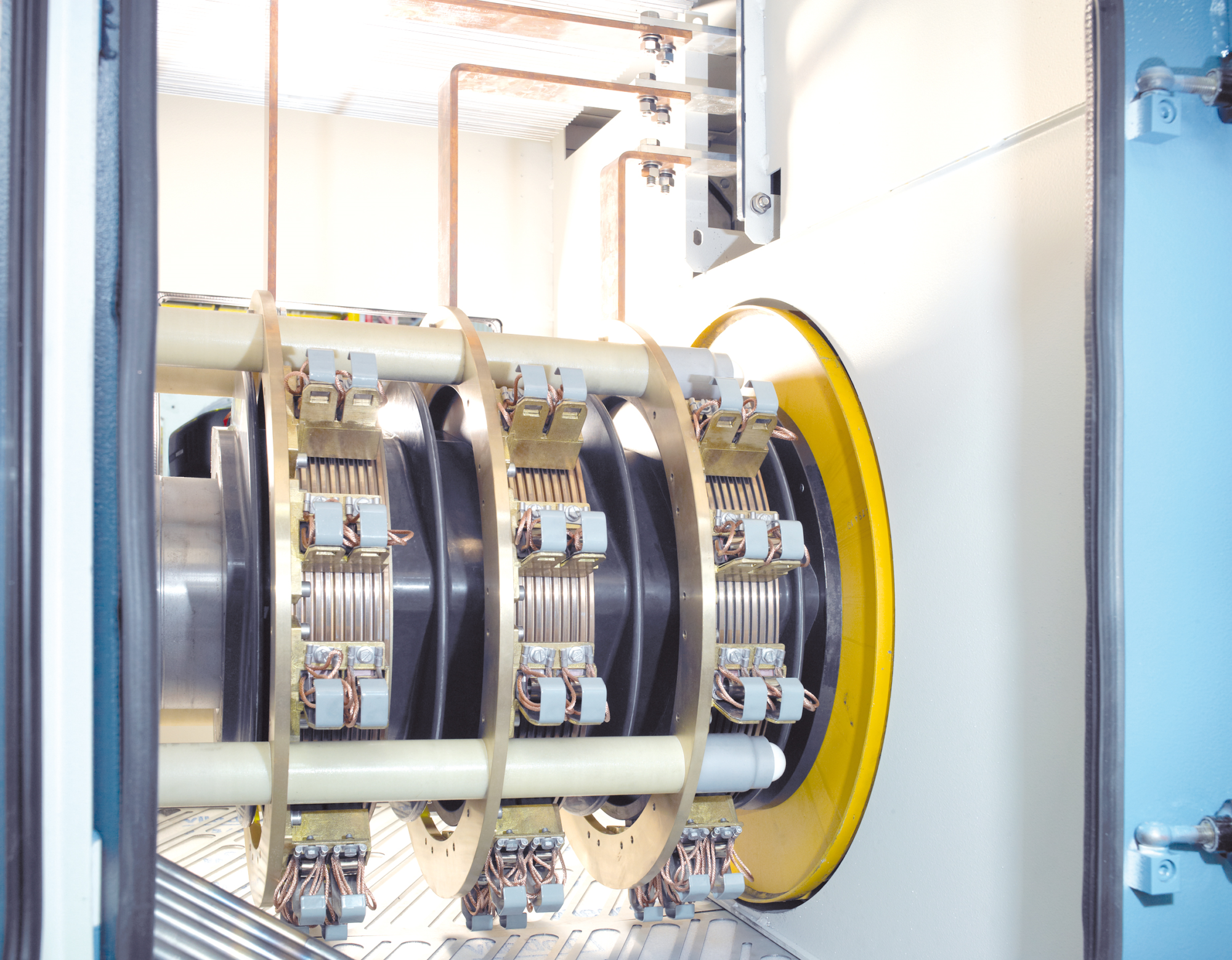Daisy-YueQin Bo, Product Manager, Large Motors and Generators, ABB Motion, recently explained to IM why large slip-ring motors, rated typically up to 8,000 kW, offer particular advantages for heavy load inertia applications in the mining industry, such as mills, fans, crushers and conveyors. Alternating current (AC) Induction motors, otherwise known as asynchronous motors, are the workhorses of the mining industry. These motors comprise two main components, a fixed stator with windings that function as electromagnets, and the rotor that spins Inside the stator. The electric current in the rotor that causes it to rotate is produced by electromagnetic induction from the magnetic field of the stator windings. This design is known as an asynchronous motor because the electrical fields in the rotor and stator are rotating at different speeds – they are ‘out of phase’ with each other.
“The high starting torque, high inertia starting capabilities and low starting current of slip-ring motors can help minimise mechanical stress when starting heavy mining equipment and increase its working lifetime. A further benefit of large slip-ring motors is their high-power density. This means that they can deliver the required power in a smaller frame size. Less space is needed to install the motor and it is easier to lift and handle on site, lowering installation costs.”
There are two main designs for large industrial induction motors. The key difference is the rotor, which can be either a squirrel-cage or a wound type used with slip-rings. The main advantage of squirrel-cage induction motors is that they are self-starting, reliable and cost-effective. However, for equipment where a high starting torque is essential to overcome the initial inertia, slip-ring motors can offer more than double their normal full-load torque on start-up. A slip-ring is simply a device intended to transmit electrical power, signals or data between rotating and fixed parts. It comprises a rotating ring made of a suitable conducting material such as copper, copper alloy or steel and fixed brushes. In a wound-rotor AC induction motor, the slip-rings are not used to carry electrical current. Instead, they are used to insert an increased resistance into the rotor windings. In a three-phase motor, three slip-rings are used – one connected to each winding phase. They are mounted on the motor shaft, so that they rotate as it rotates. But they are insulated electrically from the shaft.
The graphite brushes rub on the slip-rings as they turn, maintaining a constant electrical contact. The brushes themselves are connected to a device that provides an increased resistance, typically a rheostat. This resistance is transferred to the rotor windings as the rotor spins. The reason for wanting to add resistance to the rotor windings is because this enables the motor to produce much higher torque on start-up, but with a relatively low starting current which helps increase the network stability. The slip-rings are only needed for start-up. As the motor nears its usual running speed the slip-rings and brushes are shorted out, and it operates in the same way as the more common squirrel-cage induction motor.
Slip-ring motors are available with either permanent contact brushes or brush-lifting gear. The choice will depend on the specific application and planned maintenance regime. Permanent contact brushes have a lower initial cost. But, because they remain in continuous contact with the slip-rings, both components will wear out over time, requiring maintenance and replacement. Brush-lifting gear is slightly more expensive on initial purchase. However, it reduces the wear on brushes and slip-rings, helping to increase maintenance intervals, reduce service costs and boosting reliability.
ABB slip-ring motors are available in power ranges from 400 up to 8,000 kW in frame sizes 400 to 630. “When it comes to buying a slip-ring motor it’s important to make sure it has been designed, manufactured and tested according to the relevant IEC or NEMA and ISO standards. At ABB, all motors are given a routine test at the factory. And to provide customers with complete confidence in their selection, a heat run test can also be carried out on request.”











